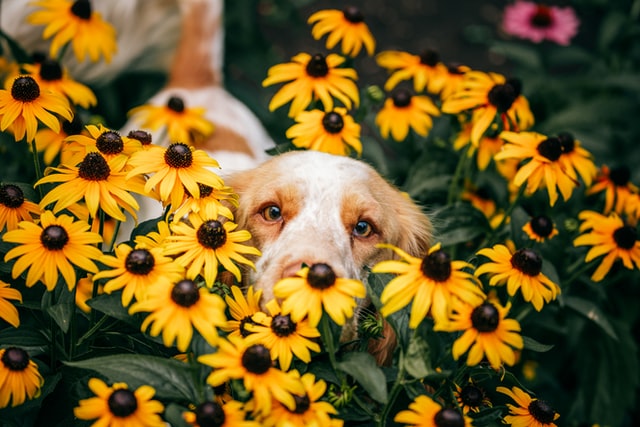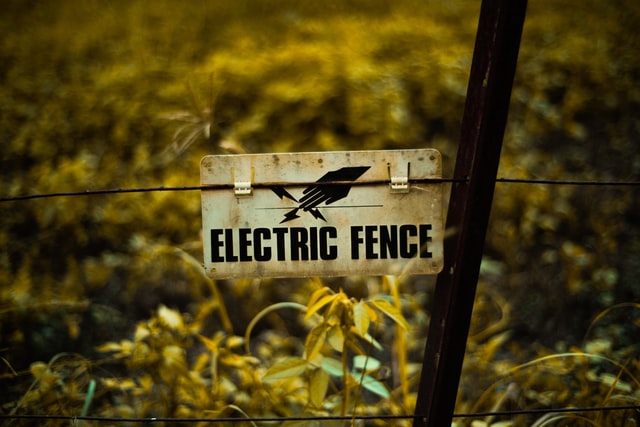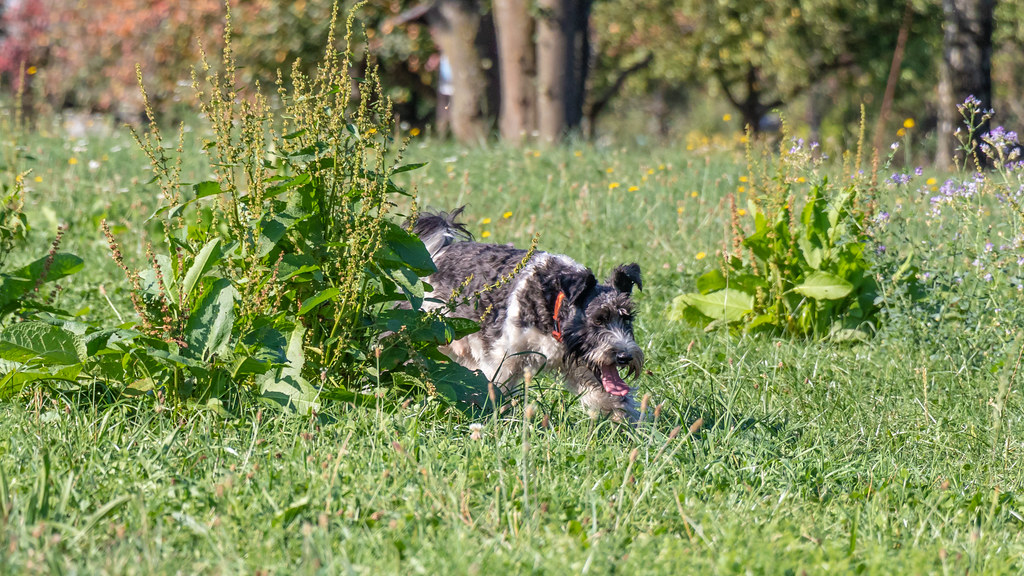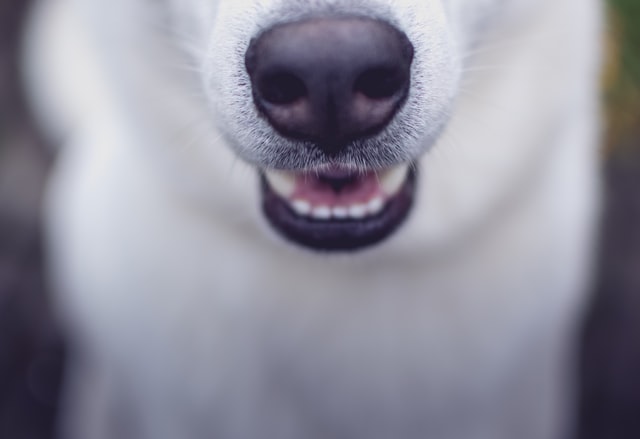Ways To Dog-Proof Garden Flower Beds
An immaculate garden and a lively pet dog are not things that you expect to see mentioned in the same sentence!
Although your pet loves to spend time outside in your garden with you, dogs can dig, chew, and generally charge around, causing carnage on your flower beds and tearing up your manicured lawn.

But don’t despair!
Here are some top tips from the team at Gardening Services London on how to dog-proof your garden.
In this guide,
Fence Off Your Flower Beds
If you’re about to embark on a garden landscaping project, probably the most effective way of dog-proofing your flower beds is to erect a fence of some kind.

Of course, the size of your dog and the look you want for your garden are the two most crucial considerations when choosing what type of fence to use.
If dogs are getting into your front garden, a high wooden fence is probably your best bet.
- If the problem is in your back garden, bamboo, or ornate metal fencing works well and can complement your planting theme.
- For a traditional look, try using a picket fence.
If you have a small dog, a modest fence will probably suffice.
However, if the culprit is a larger breed or your dog is athletic and can jump, you’ll need to have a fence that’s high enough to discourage the dog from simply hurdling it right into your herbaceous borders!
Electric Fence
If you don’t fancy the idea of having highly visible fencing in your garden, electric fences can be something to consider instead.

Electric fences don’t harm pets, they simply produce a mild static shock when the dog crosses the fenceline. You can have the electric fence set up either above or below ground.
The above ground option is visible, but the power wires that form the fence are very fine, and you can hide the plastic support posts easily enough among your plants.
The underground fencing option is invisible. For the underground fencing system to work, your dog needs to wear a receiver collar. When the dog crosses the fenceline, he receives a mild shock. To keep your dog away, put up a line of flags to tell your dog where the danger zone begins.
Dogs very quickly learn where it’s “safe” to venture and where they must not go. The main problem with the underground electric system is that you need to replace the receiver batteries in the dog’s collar periodically. Also, some dogs become so afraid of receiving a shock that they won’t go out into the garden at all.
Build A Run
If you have a large garden, why not create a fenced area specifically for your furry friend?

That way, your dog can enjoy spending time outside with you, but he won’t be able to ruin your flower beds.
Going with stamping concrete can fit to tailor any landscape versus laying it piece by piece.
Remember to equip your dog’s run with a good quality kennel or crate, where your canine companion can take shelter and shade and take a nap when he wants to.
Make A Dedicated Digging Area
Dogs love to dig, and that habit can wreak havoc on a flower bed incredibly quickly.

The canine nose is incredibly sensitive, and it’s the fascinating cocktail of odours and scents that your pet picks up from your garden soil that triggers his urge to dig.
Also, if you’ve used natural, organic manure-based fertiliser in your garden, you might find that your dog wants to roll in that, crushing your plants and compacting the soil.
You can stop that behaviour by setting up a dedicated digging spot for your dog without damaging your flower beds or grass. Pick a shady area that’s well away from your main display beds so that you don’t ruin the view. Use a child’s sandpit to keep the soil contained and reasonably tidy, and fill it with a mixture of soil and sand.
According to pet-experts Five Barks, you should encourage your furry friend to use his new digging patch by burying some tasty calming treats or hiding a chew toy for your dog to unearth.
Use Natural Plant Barriers
Natural plant barriers can look beautiful and can be highly effective at keeping dogs off your flower beds, too. You can use holly, roses, gooseberries, or other spiky, thorny branched plants to discourage furry intruders. And if you want it for the long run, some trees fit small gardens better than others.

Also, species of essential oils, such as eucalyptus oil, tea tree oil, cinnamon, citrus, peppermint, pine, wintergreen, and ylang-ylang are hazardous to pets.
If you don’t want that kind of look for your beds, try planting clippings of prickly branches among your plants to keep dogs off your borders.
Scent Off!
Just because one field test hasn’t proven it once, doesn’t mean that some smells can hint your dog to stay away. Your dog’s hypersensitive nose can be used to deter your pet from exploring your flower beds, and waste compost is an eco-friendly way to borderline surrounding your garden bed area.

Certain scents are repellant and irritating to dogs, and sprinkling a generous helping of the following substances can be highly effective at keeping your dog away from your borders:
- Citrus peel
- Coffee grounds
- Cayenne pepper
- Powdered mustard
- Chili pepper
Be aware:
Use low-acidity, horticultural grade vinegar to repel dogs and rabbits that might fancy making a meal of young plants.
Garden centres and DIY stores also sell pet repellant products that work well at keeping your dog off your flower beds.
Check The Pest Control Aisle:
Plenty of products are marketed as effective at keeping animals off your flowerbeds and lawns.
Pet repellents use natural scents that pets and vermin hate, including citrus, cinnamon, pepper, and peppermint. The main drawback to using commercially prepared pet repellent is that they don’t last for long, especially in humid or wet weather.
So, you’ll need to continually reapply the product, which works out pricey in the long-term. Water-resistant crystal formula products are a good choice, as they break down slowly, releasing the repellant odour.
Sounds Scary!
Dogs have an excellent sense of hearing to go with their incredible sense of smell, and that can also be used to keep your furry friend from invading your flower beds.
Ultrasonic pest repellant sound gadgets can be highly effective at frightening away dogs, cats, and vermin that sneak into your garden under cover of darkness. The main downside of sound repellant devices is that they also scare away visiting garden birds.
Final Thoughts
Although you love your dog, you don’t love the damage your canine companion can cause to your flower beds and extra garden waste here and there.
Try using physical deterrents to keep your dog off your flower bed, erect a fence, use natural spikey planting, create a dedicated digging area for your dog, or consider using sound and scent deterrents.
Learn more about the Gardening Services London Company and contact us today.